|
MAY
2009
�����������������������������������������������������������������������������������������������������������������������������������������������������
29th May 2009 - New research
THE EFFECT OF DBS ON PARKINSON'S
DISEASE
Journal of
Neurology, Neurosurgery and Psychiatry [2009] 80 (5) : 484-488 (Bannier S,
Montaurier C, Derost PP, Ulla M, Lemaire JJ, Boirie Y, Morio B, Durif F.)
Complete abstract
Journal of
Neurology, Neurosurgery and Psychiatry [2009] May 21 [Epub ahead of print]
(Smeding HM, Speelman JD, Huizenga HM, Schuurman PR, Schmand B.)
Complete abstract�
The effects on people with Parkinson's
Disease has been assessed after they have undergone DBS (Deep brain stimulation).
Deep
brain stimulation�
is a method of treating Parkinson's Disease that involves the use of electrodes
implanted into the brain. Three
months after surgery, DBS had caused an improvement in Parkinson's Disease
symptoms by 60%, and an improvement of more than 80% in motor complications such
as dyskinesia. No
patient
was underweight before surgery, and
half were overweight before surgery.
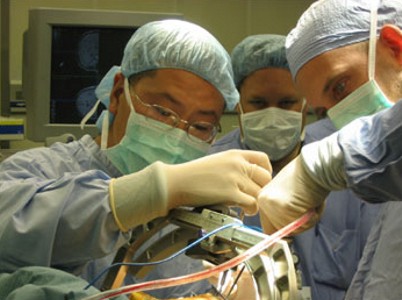 By
contrast, 68%
were overweight 3 months after surgery, and 82% were overweight after 16 months.
This weight gain was mainly secondary to an increase in fat mass in both men and
women. The researchers suggested the need to counter weight increase due to DBS
by providing diet management a physical training schedule for
people with
Parkinson's Disease. A second study found that there was a 41% improvement in
motor function,� a 32% improvement in the quality of life, but a 36%
decline in intellectual functions. Mood improved in some but declined in others.
In order to refer to this
article on its own
click here. By
contrast, 68%
were overweight 3 months after surgery, and 82% were overweight after 16 months.
This weight gain was mainly secondary to an increase in fat mass in both men and
women. The researchers suggested the need to counter weight increase due to DBS
by providing diet management a physical training schedule for
people with
Parkinson's Disease. A second study found that there was a 41% improvement in
motor function,� a 32% improvement in the quality of life, but a 36%
decline in intellectual functions. Mood improved in some but declined in others.
In order to refer to this
article on its own
click here.
�
28th May 2009 - New book
WITH SHAKING HANDS - AGING WITH
PARKINSON'S DISEASE IN AMERICA'S HEARTLAND
Samantha Solimeo
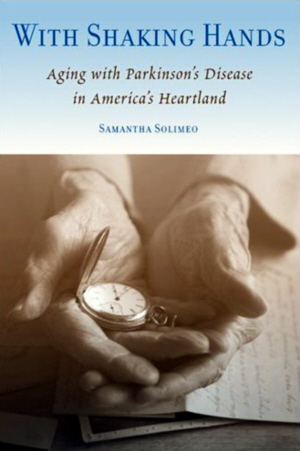 Publisher's
description : At the heart of With Shaking Hands is the account of elder
Americans in rural Iowa who have been diagnosed with PD. With a focus on the
impact of chronic illness on an aging population, Samantha Solimeo combines
clear and accessible prose with qualitative and quantitative research to
demonstrate how PD accelerates, mediates, and obscures patterns of aging. She
explores how ideas of what to expect in older age influence and direct
interpretations of one's body. A richly detailed and touching ethnographic
portrayal of the experiences of elderly people with Parkinson's disease.
Click here for more details Publisher's
description : At the heart of With Shaking Hands is the account of elder
Americans in rural Iowa who have been diagnosed with PD. With a focus on the
impact of chronic illness on an aging population, Samantha Solimeo combines
clear and accessible prose with qualitative and quantitative research to
demonstrate how PD accelerates, mediates, and obscures patterns of aging. She
explores how ideas of what to expect in older age influence and direct
interpretations of one's body. A richly detailed and touching ethnographic
portrayal of the experiences of elderly people with Parkinson's disease.
Click here for more details For more books concerning Parkinson's Disease go to
Parkinson's Disease Books.
For more books concerning Parkinson's Disease go to
Parkinson's Disease Books.
�
23rd May 2009 - New research
ESTROGEN AND THE RISK OF
PARKINSON'S DISEASE
Movement Disorders [2009] May 7
[ahead of print] (Simon KC, Chen H, Gao X, Schwarzschild MA, Ascherio A.)
Complete abstract�
Researchers have assessed whether estrogen and reproductive factors are
associated with the risk of Parkinson's Disease. Estrogen has numerous effects
on dopamine, and Parkinson's Disease is more common in men than women. So it had
previously been theorised that estrogen could have a therapeutic effect on
Parkinson's Disease.
 Click
here for more details
However, when fully assessed, it was found that the risk of Parkinson's Disease
was not associated with any reproductive factors or the use of estrogen. Use of
postmenopausal hormones did reduce the lessening effect of smoking and caffeine
intake on Parkinson's Disease. Also, women using progestin-only hormones were
found to have an increased risk of Parkinson's Disease, but this result was
based on only a small number of cases, and so might not be statistically
significant.
In order to refer to this
article on its own
click here. Click
here for more details
However, when fully assessed, it was found that the risk of Parkinson's Disease
was not associated with any reproductive factors or the use of estrogen. Use of
postmenopausal hormones did reduce the lessening effect of smoking and caffeine
intake on Parkinson's Disease. Also, women using progestin-only hormones were
found to have an increased risk of Parkinson's Disease, but this result was
based on only a small number of cases, and so might not be statistically
significant.
In order to refer to this
article on its own
click here.
�
������������������������������������������������������������������������������������������������������������������������������������������������ �22nd May 2009 - New book
PARKINSONIAN DISORDERS IN
CLINICAL PRACTICE
Anthony Schapira (Editor),
Andreas Hartmann (Editor), Yves Agid (Editor)
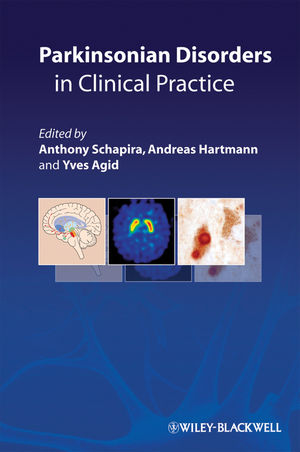 Publisher's
description : This book gives the reader an up-to-date, clear and logical idea
of what caring for parkinsonian patients entails - a challenge that clinicians
will face for many years to come. It is split into three sections : Section 1 -
A compilation of the major brain lesions typically seen in Parkinson's Disease;
Section 2 - Treatment options in Parkinson's Disease; Section 3 - 25 cases of
Parkinson's Disease designed to test the reader and the practical application of
the information supplied in the other sections.
Click here for more details Publisher's
description : This book gives the reader an up-to-date, clear and logical idea
of what caring for parkinsonian patients entails - a challenge that clinicians
will face for many years to come. It is split into three sections : Section 1 -
A compilation of the major brain lesions typically seen in Parkinson's Disease;
Section 2 - Treatment options in Parkinson's Disease; Section 3 - 25 cases of
Parkinson's Disease designed to test the reader and the practical application of
the information supplied in the other sections.
Click here for more details The previous book by
two of the authors was titled "Parkinson's
Disease in Daily Practice".
Click here for more details� In order to refer to this article
on its own
click here.
The previous book by
two of the authors was titled "Parkinson's
Disease in Daily Practice".
Click here for more details� In order to refer to this article
on its own
click here.
�
20th May 2009 - New research
ANTI-DEPRESSANTS
PRECEDE PARKINSON'S DISEASE
Journal of neurology,
neurosurgery, and psychiatry [2009] 80 (6) : 671-674 (Alonso A, Rodr�guez LA,
Logroscino G, Hern�n MA.)
Complete abstract
Those people taking
anti-depressants were found to be nearly two times (1.85 times) more likely to
develop Parkinson's Disease. The association became more than twice as likely (2.19 times) during the first two years after initiation of anti-depressant use.
More than two years later, previous anti-depressant use increased the likelihood
of
Parkinson's
Disease only slightly.
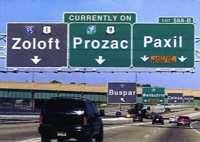 Results were similar for selective serotonin reuptake
inhibitors and tricyclic anti-depressants separately. It is uncertain as to
whether it is the anti-depressants or depression that caused this association.
Individuals with depression have a higher risk of developing Parkinson's Disease
but the timing of the association is unknown. They often coincide because
depression is also a potential symptom of the insufficient dopamine that occurs
in Parkinson's Disease. The researchers suggest that depressive symptoms could
be an early manifestation of Parkinson's Disease that precedes muscular
symptoms.
In order to refer to this article
on its own
click here. Results were similar for selective serotonin reuptake
inhibitors and tricyclic anti-depressants separately. It is uncertain as to
whether it is the anti-depressants or depression that caused this association.
Individuals with depression have a higher risk of developing Parkinson's Disease
but the timing of the association is unknown. They often coincide because
depression is also a potential symptom of the insufficient dopamine that occurs
in Parkinson's Disease. The researchers suggest that depressive symptoms could
be an early manifestation of Parkinson's Disease that precedes muscular
symptoms.
In order to refer to this article
on its own
click here.
�
19th May 2009 - News release
BASKETBALL STAR DEVELOPS PARKINSON'S DISEASE
Former NBA basketball
star Brian Grant has been diagnosed with "young onset" Parkinson's Disease in
January whilst still only 36, after he began having tremors in his left hand
last summer. He consulted two other well-known Parkinson's Disease sufferers, Michael J. Fox and Muhammad Ali,
and quickly implemented several lifestyle
 changes.
For the full details and a video interview,
go to the
Complete article. He played for� Los Angeles Lakers, Sacramento Kings, Portland
Trail Blazers, Miami Heat, and Phoenix Suns in the NBA. For more information go
to
Brian Grant. He is starting a web site devoted to Parkinson's
Disease, and has his own
official web site. In order to refer to this article
on its own
click here. changes.
For the full details and a video interview,
go to the
Complete article. He played for� Los Angeles Lakers, Sacramento Kings, Portland
Trail Blazers, Miami Heat, and Phoenix Suns in the NBA. For more information go
to
Brian Grant. He is starting a web site devoted to Parkinson's
Disease, and has his own
official web site. In order to refer to this article
on its own
click here.
�
17th May 2009 - News release
NEW METHOD OF
DIAGNOSING
PARKINSON'S DISEASE
Transgenomic and
Power3 Medical have announced the introduction of a new blood test for
Parkinson's Disease called NuroPro� PD. The NuroPro PD test can help clinicians
distinguish patients with Parkinson�s diseases from those that don't have
Parkinson's Disease, and those people with other neurological disorders. The
tests are a panel of blood serum protein biomarkers that are evaluated to
predict the probability that somebody has Parkinson's
Disease.
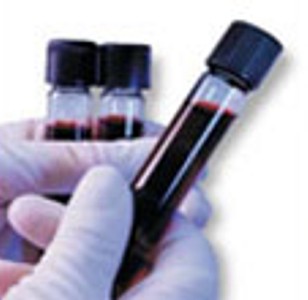 The results showed that NuroPro PD was able to discriminate between Parkinson�s
Disease patients and age-matched control subjects with a sensitivity of 93% and
specificity of 96%. Samples from Parkinson�s Disease patients were correctly
identified with 100% sensitivity when tested. The aim is to market NuroPro PD in
the near future. For more information go to the
Press release. As many as
25% of people with Parkinson's Disease are wrongly diagnosed. So a method of
diagnosing Parkinson's Disease that was far more accurate than symptom
questionnaires, and much cheaper than the relatively expensive scanning methods,
would be a major development. For current methods of diagnosis, go to
Diagnosis of Parkinson's Disease.
In order to refer to this article
on its own
click here. The results showed that NuroPro PD was able to discriminate between Parkinson�s
Disease patients and age-matched control subjects with a sensitivity of 93% and
specificity of 96%. Samples from Parkinson�s Disease patients were correctly
identified with 100% sensitivity when tested. The aim is to market NuroPro PD in
the near future. For more information go to the
Press release. As many as
25% of people with Parkinson's Disease are wrongly diagnosed. So a method of
diagnosing Parkinson's Disease that was far more accurate than symptom
questionnaires, and much cheaper than the relatively expensive scanning methods,
would be a major development. For current methods of diagnosis, go to
Diagnosis of Parkinson's Disease.
In order to refer to this article
on its own
click here.
�
15th May 2009 - New book
LIFE WITH A BATTERY-OPERATED BRAIN : A PATIENT'S
GUIDE TO DEEP BRAIN STIMULATION SURGERY FOR PARKINSON'S DISEASE
Jackie Hunt Christensen
 Publisher's description : Why would anyone say �Let�s stick wires into someone�s
brain, run voltage through it, and see what happens!� ? Author Christensen answers this question and more in her
unique and comprehensive book, as she has firsthand knowledge of the procedure
commonly referred to as DBS. She herself lived with Parkinson�s disease for more
than seven years before electing to be evaluated for DBS
surgery.�
Parkinson�s disease, the author is quick to point out, does not end, but DBS is
meant to be a long-term treatment. Jackie Hunt Christensen offers a step-by-step
look at her own journey, as well as offering information on a typical evaluation
process, medical statistics, questions to ask neurosurgeons, opinions from other
DBS patients, the programming process for DBS, and much more.�
For more details click here Publisher's description : Why would anyone say �Let�s stick wires into someone�s
brain, run voltage through it, and see what happens!� ? Author Christensen answers this question and more in her
unique and comprehensive book, as she has firsthand knowledge of the procedure
commonly referred to as DBS. She herself lived with Parkinson�s disease for more
than seven years before electing to be evaluated for DBS
surgery.�
Parkinson�s disease, the author is quick to point out, does not end, but DBS is
meant to be a long-term treatment. Jackie Hunt Christensen offers a step-by-step
look at her own journey, as well as offering information on a typical evaluation
process, medical statistics, questions to ask neurosurgeons, opinions from other
DBS patients, the programming process for DBS, and much more.�
For more details click here .
In order to refer to this article
on its own
click here. .
In order to refer to this article
on its own
click here.
�
13th May 2009 - New research
THE PREVALENCE OF
ANXIETY IN PARKINSON'S DISEASE
Movement Disorders [2009] May 7 [Epub ahead of print] (Pontone GM, Williams JR,
Anderson KE, Chase G, Goldstein SA, Grill S, Hirsch ES, Lehmann S, Little JT,
Margolis RL, Rabins PV, Weiss HD, Marsh L.)
Complete abstract
Anxiety disorders are common in Parkinson's Disease, but are not well
characterized. So this study determined the prevalence of anxiety disorders in
Parkinson's Disease. Around 43% of people with Parkinson's Disease were found to
currently have an anxiety disorder. Almost half of people with Parkinson's
Disease were found to have had an anxiety
disorder at some time. Panic disorders were more associated with an earlier age
of onset of Parkinson's
Disease,
and were more common in those people with greater motor fluctuations and
morning dystonia.
 This high prevalence of
anxiety disorders suggested to the researchers that anxiety in Parkinson's
Disease is both underdiagnosed and undertreated. The main biochemical fault in
Parkinson's Disease is insufficient dopamine. Low dopamine does not cause
anxiety itself. So anxiety is not an inevitable part of Parkinson's Disease.
L-dopa can end up as noradrenaline, which causes anxiety. So the
high prevalence of anxiety in Parkinson's Disease may be largely due
to the side effects of certain Parkinson's Disease drugs.
In order to refer to this article
on its own
click here. This high prevalence of
anxiety disorders suggested to the researchers that anxiety in Parkinson's
Disease is both underdiagnosed and undertreated. The main biochemical fault in
Parkinson's Disease is insufficient dopamine. Low dopamine does not cause
anxiety itself. So anxiety is not an inevitable part of Parkinson's Disease.
L-dopa can end up as noradrenaline, which causes anxiety. So the
high prevalence of anxiety in Parkinson's Disease may be largely due
to the side effects of certain Parkinson's Disease drugs.
In order to refer to this article
on its own
click here.
�
11th May 2009 - New research
ALUMINIUM AND THE RISK
OF PARKINSON'S DISEASE
Journal of Neurochemistry [2009] 109 (3) : 879-888 (S�nchez-Iglesias S, M�ndez-Alvarez
E, Iglesias-Gonz�lez J, Mu�oz-Pati�o A, S�nchez-Sellero I, Labandeira-Garc�a JL,
Soto-Otero R.)
Complete abstract
Aluminium has no known function in humans, yet people inadvertently consume it,
due to using aluminium cookware, the use of antiperspirants and deodorants,
drinks in aluminium cans, bleached flour, antacids, and even in some water
supplies.� High levels of aluminium are known to be able to affect
neurological disorders. Results of this study showed that aluminium caused an
increase in oxidative stress for most of the brain regions studied.
 This
was accompanied by a decrease in the activity of
some antioxidant enzymes (chemicals that protect the cells against damage).
However, studies confirmed the inability of aluminium to affect the activity of
those antioxidant enzymes. Aluminium also enhanced the ability of a known
neurotoxin, to cause oxidative stress and neuro-degeneration in the dopaminergic
neurons (the cells involved in Parkinson's Disease). The authors conclude that
aluminium is a risk factor for developing Parkinson's Disease. Contrary to their
claims, severe aluminium poisoning has never been shown to cause Parkinson's
Disease.
In order to refer to this article
on its own
click here. This
was accompanied by a decrease in the activity of
some antioxidant enzymes (chemicals that protect the cells against damage).
However, studies confirmed the inability of aluminium to affect the activity of
those antioxidant enzymes. Aluminium also enhanced the ability of a known
neurotoxin, to cause oxidative stress and neuro-degeneration in the dopaminergic
neurons (the cells involved in Parkinson's Disease). The authors conclude that
aluminium is a risk factor for developing Parkinson's Disease. Contrary to their
claims, severe aluminium poisoning has never been shown to cause Parkinson's
Disease.
In order to refer to this article
on its own
click here.
�
6th May 2009 - New research
RACIAL DIFFERENCES IN
PARKINSON'S DISEASE
Movement Disorders [2009] May 1 [Epub ahead of print] (Dahodwala N, Siderowf A,
Xie M, Noll E, Stern M, Mandell DS.)
Complete abstract
The objective of this study was to determine the incidence of Parkinson's
Disease according to race in the U.S.A.. Most prone were whites with an
incidence of 45 per 100,000. Latinos were the next most prone with an incidence
of 40 per 100,000. Least prone of all were African-Americans with an incidence
of only 23 per 100,000. This gave
African-Americans
only a 43% chance of being diagnosed in comparison to whites.
 Even after
adjusting for all possible factors, American-Americans still had less than half
the likelihood of developing Parkinson's Disease. The reason for this racial
difference in Parkinson's Disease is unknown. Observed racial differences in the
incidence of Parkinson's Disease are not explained at all by differences in age,
sex, income, insurance or healthcare utilization. The country with the lowest
prevalence of Parkinson's Disease - Ethiopia - is also African, as are other
countries with a low prevalence of Parkinson's Disease. However, Latin American
countries, such as Colombia and Bolivia also have a low prevalence of
Parkinson's Disease. For more information go to the
Prevalence of Parkinson's Disease.
In order to refer to this article on its own
click here. Even after
adjusting for all possible factors, American-Americans still had less than half
the likelihood of developing Parkinson's Disease. The reason for this racial
difference in Parkinson's Disease is unknown. Observed racial differences in the
incidence of Parkinson's Disease are not explained at all by differences in age,
sex, income, insurance or healthcare utilization. The country with the lowest
prevalence of Parkinson's Disease - Ethiopia - is also African, as are other
countries with a low prevalence of Parkinson's Disease. However, Latin American
countries, such as Colombia and Bolivia also have a low prevalence of
Parkinson's Disease. For more information go to the
Prevalence of Parkinson's Disease.
In order to refer to this article on its own
click here.
�
3rd May 2009 - New research
PRAMIPEXOLE CLINICAL
TRIAL RESULTS
Pramipexole (known under the trade names Mirapexin�, Sifrol�,
Mirapex� and Pexola�) is a drug that is used for
Parkinson's Disease, on its own or with L-dopa. However, there are numerous
possible side effects.� It is claimed that the outcome of a new study on
Pramipexole is set to change the treatment of depressive symptoms in Parkinson's
Disease because Pramipexole is claimed to relieve the
depressive symptoms of Parkinson's Disease.
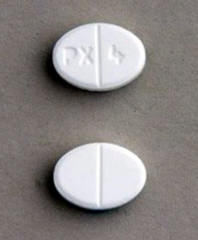 However, the results show that the effect of Pramipexole was little better than
the effect of a placebo : depression
(reduced
by -5.9 v -4.0), geriatric depression (improved by 2.5 v 1.7),
Parkinson's Disease symptoms (reduced by -4.4 v -2), daily living
(improved by -2.4 v -1.2). Those taking only a placebo improved on all the
scales as well, thereby reducing the actual benefit of Pramipexole. The
placebo achieved a similar effect without the widespread side effects of Pramipexole. �For more information go to the
News release. However, the results show that the effect of Pramipexole was little better than
the effect of a placebo : depression
(reduced
by -5.9 v -4.0), geriatric depression (improved by 2.5 v 1.7),
Parkinson's Disease symptoms (reduced by -4.4 v -2), daily living
(improved by -2.4 v -1.2). Those taking only a placebo improved on all the
scales as well, thereby reducing the actual benefit of Pramipexole. The
placebo achieved a similar effect without the widespread side effects of Pramipexole. �For more information go to the
News release.
Previous research by
the same author also showed that Pramipexole was not not much more effective for
Parkinson's Disease depression than a placebo.
For more information go to the�
Complete abstract.
In order to refer to this article on its own
click here.
�
��
|
.gif)
.gif)
 By
contrast, 68%
were overweight 3 months after surgery, and 82% were overweight after 16 months.
This weight gain was mainly secondary to an increase in fat mass in both men and
women. The researchers suggested the need to counter weight increase due to DBS
by providing diet management a physical training schedule for
people with
Parkinson's Disease. A second study found that there was a 41% improvement in
motor function,� a 32% improvement in the quality of life, but a 36%
decline in intellectual functions. Mood improved in some but declined in others.
In order to refer to this
article on its own
By
contrast, 68%
were overweight 3 months after surgery, and 82% were overweight after 16 months.
This weight gain was mainly secondary to an increase in fat mass in both men and
women. The researchers suggested the need to counter weight increase due to DBS
by providing diet management a physical training schedule for
people with
Parkinson's Disease. A second study found that there was a 41% improvement in
motor function,� a 32% improvement in the quality of life, but a 36%
decline in intellectual functions. Mood improved in some but declined in others.
In order to refer to this
article on its own
 Publisher's
description : At the heart of With Shaking Hands is the account of elder
Americans in rural Iowa who have been diagnosed with PD. With a focus on the
impact of chronic illness on an aging population, Samantha Solimeo combines
clear and accessible prose with qualitative and quantitative research to
demonstrate how PD accelerates, mediates, and obscures patterns of aging. She
explores how ideas of what to expect in older age influence and direct
interpretations of one's body. A richly detailed and touching ethnographic
portrayal of the experiences of elderly people with Parkinson's disease.
Publisher's
description : At the heart of With Shaking Hands is the account of elder
Americans in rural Iowa who have been diagnosed with PD. With a focus on the
impact of chronic illness on an aging population, Samantha Solimeo combines
clear and accessible prose with qualitative and quantitative research to
demonstrate how PD accelerates, mediates, and obscures patterns of aging. She
explores how ideas of what to expect in older age influence and direct
interpretations of one's body. A richly detailed and touching ethnographic
portrayal of the experiences of elderly people with Parkinson's disease. 
 Publisher's
description : This book gives the reader an up-to-date, clear and logical idea
of what caring for parkinsonian patients entails - a challenge that clinicians
will face for many years to come. It is split into three sections : Section 1 -
A compilation of the major brain lesions typically seen in Parkinson's Disease;
Section 2 - Treatment options in Parkinson's Disease; Section 3 - 25 cases of
Parkinson's Disease designed to test the reader and the practical application of
the information supplied in the other sections.
Publisher's
description : This book gives the reader an up-to-date, clear and logical idea
of what caring for parkinsonian patients entails - a challenge that clinicians
will face for many years to come. It is split into three sections : Section 1 -
A compilation of the major brain lesions typically seen in Parkinson's Disease;
Section 2 - Treatment options in Parkinson's Disease; Section 3 - 25 cases of
Parkinson's Disease designed to test the reader and the practical application of
the information supplied in the other sections.  Results were similar for selective serotonin reuptake
inhibitors and tricyclic anti-depressants separately. It is uncertain as to
whether it is the anti-depressants or depression that caused this association.
Individuals with depression have a higher risk of developing Parkinson's Disease
but the timing of the association is unknown. They often coincide because
depression is also a potential symptom of the insufficient dopamine that occurs
in Parkinson's Disease. The researchers suggest that depressive symptoms could
be an early manifestation of Parkinson's Disease that precedes muscular
symptoms.
In order to refer to this article
on its own
Results were similar for selective serotonin reuptake
inhibitors and tricyclic anti-depressants separately. It is uncertain as to
whether it is the anti-depressants or depression that caused this association.
Individuals with depression have a higher risk of developing Parkinson's Disease
but the timing of the association is unknown. They often coincide because
depression is also a potential symptom of the insufficient dopamine that occurs
in Parkinson's Disease. The researchers suggest that depressive symptoms could
be an early manifestation of Parkinson's Disease that precedes muscular
symptoms.
In order to refer to this article
on its own  changes.
For the full details and a video interview,
go to the
changes.
For the full details and a video interview,
go to the 
 Publisher's description : Why would anyone say �Let�s stick wires into someone�s
brain, run voltage through it, and see what happens!� ? Author Christensen answers this question and more in her
unique and comprehensive book, as she has firsthand knowledge of the procedure
commonly referred to as DBS. She herself lived with Parkinson�s disease for more
than seven years before electing to be evaluated for DBS
surgery.�
Parkinson�s disease, the author is quick to point out, does not end, but DBS is
meant to be a long-term treatment. Jackie Hunt Christensen offers a step-by-step
look at her own journey, as well as offering information on a typical evaluation
process, medical statistics, questions to ask neurosurgeons, opinions from other
DBS patients, the programming process for DBS, and much more.�
Publisher's description : Why would anyone say �Let�s stick wires into someone�s
brain, run voltage through it, and see what happens!� ? Author Christensen answers this question and more in her
unique and comprehensive book, as she has firsthand knowledge of the procedure
commonly referred to as DBS. She herself lived with Parkinson�s disease for more
than seven years before electing to be evaluated for DBS
surgery.�
Parkinson�s disease, the author is quick to point out, does not end, but DBS is
meant to be a long-term treatment. Jackie Hunt Christensen offers a step-by-step
look at her own journey, as well as offering information on a typical evaluation
process, medical statistics, questions to ask neurosurgeons, opinions from other
DBS patients, the programming process for DBS, and much more.�
 This high prevalence of
anxiety disorders suggested to the researchers that anxiety in Parkinson's
Disease is both underdiagnosed and undertreated. The main biochemical fault in
Parkinson's Disease is insufficient dopamine. Low dopamine does not cause
anxiety itself. So anxiety is not an inevitable part of Parkinson's Disease.
L-dopa can end up as noradrenaline, which causes anxiety. So the
high prevalence of anxiety in Parkinson's Disease may be largely due
to the side effects of certain Parkinson's Disease drugs.
In order to refer to this article
on its own
This high prevalence of
anxiety disorders suggested to the researchers that anxiety in Parkinson's
Disease is both underdiagnosed and undertreated. The main biochemical fault in
Parkinson's Disease is insufficient dopamine. Low dopamine does not cause
anxiety itself. So anxiety is not an inevitable part of Parkinson's Disease.
L-dopa can end up as noradrenaline, which causes anxiety. So the
high prevalence of anxiety in Parkinson's Disease may be largely due
to the side effects of certain Parkinson's Disease drugs.
In order to refer to this article
on its own  This
was accompanied by a decrease in the activity of
some antioxidant enzymes (chemicals that protect the cells against damage).
However, studies confirmed the inability of aluminium to affect the activity of
those antioxidant enzymes. Aluminium also enhanced the ability of a known
neurotoxin, to cause oxidative stress and neuro-degeneration in the dopaminergic
neurons (the cells involved in Parkinson's Disease). The authors conclude that
aluminium is a risk factor for developing Parkinson's Disease. Contrary to their
claims, severe aluminium poisoning has never been shown to cause Parkinson's
Disease.
In order to refer to this article
on its own
This
was accompanied by a decrease in the activity of
some antioxidant enzymes (chemicals that protect the cells against damage).
However, studies confirmed the inability of aluminium to affect the activity of
those antioxidant enzymes. Aluminium also enhanced the ability of a known
neurotoxin, to cause oxidative stress and neuro-degeneration in the dopaminergic
neurons (the cells involved in Parkinson's Disease). The authors conclude that
aluminium is a risk factor for developing Parkinson's Disease. Contrary to their
claims, severe aluminium poisoning has never been shown to cause Parkinson's
Disease.
In order to refer to this article
on its own  Even after
adjusting for all possible factors, American-Americans still had less than half
the likelihood of developing Parkinson's Disease. The reason for this racial
difference in Parkinson's Disease is unknown. Observed racial differences in the
incidence of Parkinson's Disease are not explained at all by differences in age,
sex, income, insurance or healthcare utilization. The country with the lowest
prevalence of Parkinson's Disease - Ethiopia - is also African, as are other
countries with a low prevalence of Parkinson's Disease. However, Latin American
countries, such as Colombia and Bolivia also have a low prevalence of
Parkinson's Disease. For more information go to the
Even after
adjusting for all possible factors, American-Americans still had less than half
the likelihood of developing Parkinson's Disease. The reason for this racial
difference in Parkinson's Disease is unknown. Observed racial differences in the
incidence of Parkinson's Disease are not explained at all by differences in age,
sex, income, insurance or healthcare utilization. The country with the lowest
prevalence of Parkinson's Disease - Ethiopia - is also African, as are other
countries with a low prevalence of Parkinson's Disease. However, Latin American
countries, such as Colombia and Bolivia also have a low prevalence of
Parkinson's Disease. For more information go to the  However, the results show that the effect of Pramipexole was little better than
the effect of a placebo : depression
(reduced
by -5.9 v -4.0), geriatric depression (improved by 2.5 v 1.7),
Parkinson's Disease symptoms (reduced by -4.4 v -2), daily living
(improved by -2.4 v -1.2). Those taking only a placebo improved on all the
scales as well, thereby reducing the actual benefit of Pramipexole. The
placebo achieved a similar effect without the widespread side effects of Pramipexole. �For more information go to the
However, the results show that the effect of Pramipexole was little better than
the effect of a placebo : depression
(reduced
by -5.9 v -4.0), geriatric depression (improved by 2.5 v 1.7),
Parkinson's Disease symptoms (reduced by -4.4 v -2), daily living
(improved by -2.4 v -1.2). Those taking only a placebo improved on all the
scales as well, thereby reducing the actual benefit of Pramipexole. The
placebo achieved a similar effect without the widespread side effects of Pramipexole. �For more information go to the